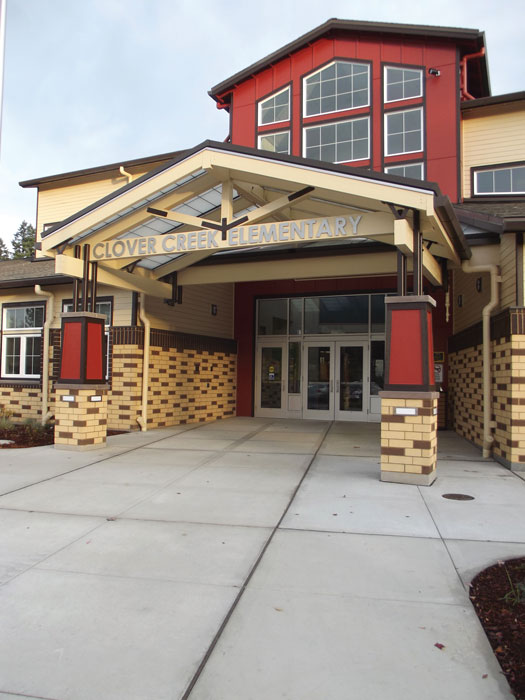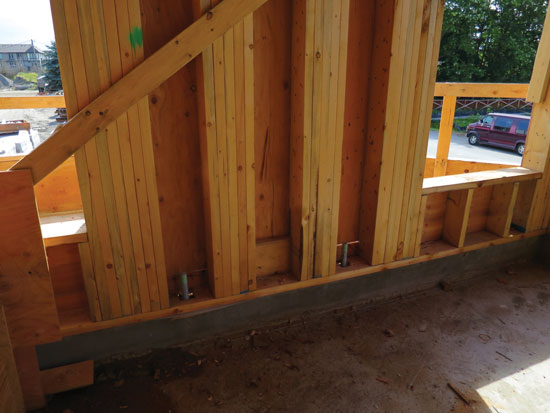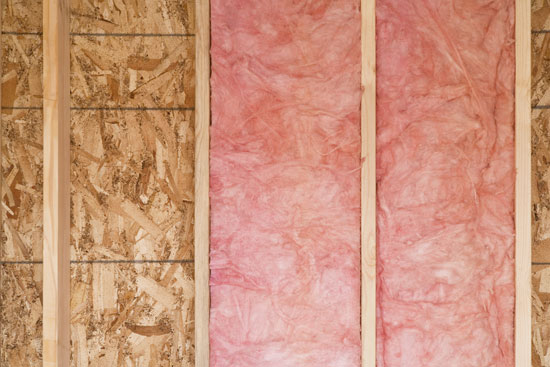Energy Efficient Wood Buildings
According to architect Wayne Lerch, “Steel and concrete need separation between the structure and exterior envelope. This separation is not required with wood because of its inherent thermal properties.” At the same time, the BSD strategy to over-insulate stud cavities with inexpensive batt insulation plays a significant role in meeting its energy objectives.
While this continuing education course focuses primarily on mid-rise buildings four-to-six stories, many of the principles hold true for other building types. Information on how to economically meet the residential requirements of the 2012 IECC for buildings under four stories can be found in the American Wood Council publication, DCA-7, Meeting Residential Energy Requirements with Wood-Frame Construction.
Design Considerations for Energy-Efficient Building Enclosures
As a general rule, the most significant sources of building envelope energy loss are windows, doors, and air infiltration (leakage). Therefore, use of high-efficiency windows and doors and proper sealing of joints can significantly reduce whole-building energy consumption. Recent changes to the energy codes have also been aimed at insulating the exterior building envelope with very high levels of insulation as another way to reduce energy consumption.
It must be noted that well-insulated assemblies also require effective moisture, water vapor, and air movement control strategies. While these are beyond the scope of this course, information on moisture in the context of air and thermal control can be found in the Guide for Designing Energy-Efficient Building Enclosures for Wood-Frame Multi-Unit Residential Buildings in Marine to Cold Climates in North America (the Guide).3
Following are several considerations for architects seeking to design an energy-efficient multi-story building. They are meant as examples as opposed to a comprehensive list, and are explained in greater detail in the Guide.

Photo courtesy of Bethel School District
CLOVER CREEK ELEMENTARY SCHOOL FREDERICKSON, WA • ERICKSON MCGOVERN ARCHITECTS
Heat Flow
Minimizing space heating or cooling energy use is a primary function of the building enclosure. While heat flow through the building enclosure cannot be prevented, it can be controlled in order to reduce the total energy consumption and improve comfort. This is achieved by constructing a thermally insulated and airtight building enclosure.
There are three principal mechanisms of heat transfer through the materials, components, and assemblies that make up the building enclosure: conduction, radiation, and convection. The control of all three is critical in thermally efficient building enclosure assemblies.
Conduction or thermal conductivity, is a measure of the rate of heat flow through one unit thickness of a material subjected to a temperature gradient. The thermal conductivity of common structural wood products is much less than the conductivity of metals, but is about two to four times that of common insulating material. For example, the conductivity of structural softwood lumber at 12 percent moisture content is in the range of 0.7 to 1.0 Btu×in/(h×ft2×°F) compared with 1,500 for aluminum, 310 for steel, 6 for concrete, 7 for glass, 5 for plaster, and 0.25 for mineral wool.4
The thermal resistance, or effective insulating value, of building enclosure assemblies and components determines the magnitude of the conductive heat loss. All enclosure elements should be designed and detailed to maximize thermal resistance (within practical limits); detailing of often overlooked elements will reduce the amount of energy that is lost through conduction. For example, cladding supports, floors, balconies, fasteners, concrete slabs, and window frames can all be sources of energy loss. Energy standards and codes generally require thermal bridges to be accounted for in the code compliance of multi-unit residential buildings.
Radiation is the transfer of energy through a gas or vacuum in the form of electromagnetic waves. It is the process whereby a hot surface radiates heat to a colder surface and requires a clear line of sight between the surfaces involved. Both the temperature of the two surfaces and the emissivity of the materials affect the amount of heat loss.
Techniques for reducing heat loss due to radiation include employing low solar gain/low U-factor fenestration, cool roof technologies, and radiant barriers.
Modeling heat flow through an opaque wall section requires an understanding of the various methods presented in the ASHRAE User’s Manual for ANSI/AHSRAE/IESNA Standard 90.1 – 2007. Wood walls are simple to model using the parallel path calculation method, which recognizes that wood behaves like an insulator, but with a U-value that is greater than the cavity insulation. Concrete or concrete masonry unit wall construction is most accurately modeled using the isothermal planes method, recognizing that highly conductive materials do little to prevent heat flow. Lastly, steel wall assemblies are most suitably modeled using the modified zone method, which recognizes the highly conductive nature of steel. This method accounts for the degrading effect to cavity insulation that is in close proximity to a steel stud and conduction through wall layers that are in contact with the flange of the steel stud. Overall, the parallel path method used for wood walls is far simpler than the methods associated with other materials.
Convection is the transfer of energy by the movement of a fluid such as air. Convective heat transfer for building enclosures has two primary mechanisms: convective flow of air within assemblies or spaces, and convective flow through assemblies from interior to exterior or exterior to interior. The latter is referred to as air leakage.
The control of air leakage is important to conserve space heat and reduce air-conditioning loads. In multi-story buildings, air leakage may account for up to half of the space-heat loss, depending on the air-leakage rate, building height and wind exposure, occupant behavior, mechanical penetrations, and several other factors including the effective enclosure thermal performance. Air leakage in multi-story buildings is typically higher than in smaller, single-family dwellings due to increased wind exposure, the stack effect, and mechanical systems, all of which contribute to higher and more sustained differential pressures across the building enclosure.

Photo courtesy of FPInnovations
With five- and six-story wood-frame buildings, greater height creates a need for more structural framing, especially at lower floor levels. Stud packs of built-up stud columns may be utilized to meet seismic and gravity load-carrying requirements. In many of these walls, the use of exterior-insulated assemblies may be more efficient than insulating stud cavities.











